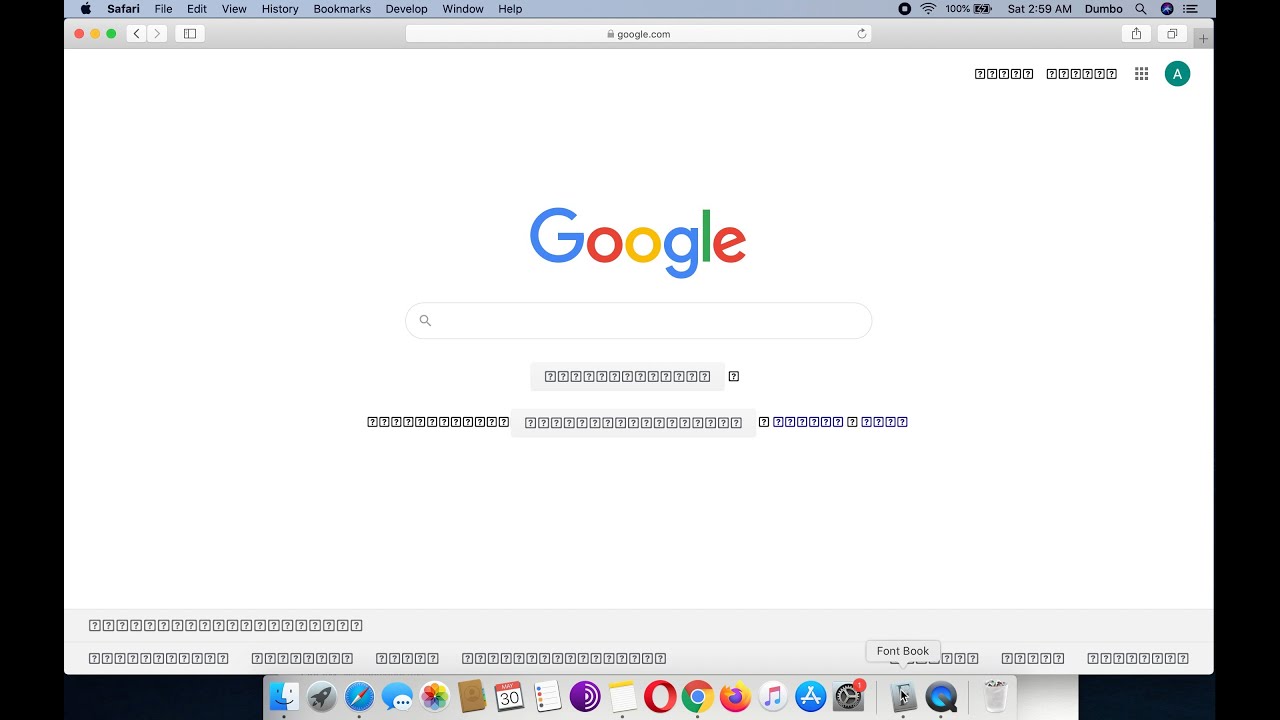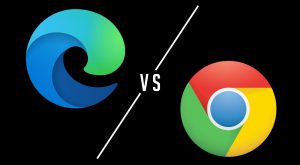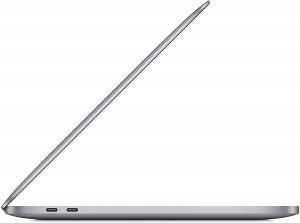Introduction
Have you ever experienced the frustration of seeing question marks instead of images while browsing the web on Safari? It can be quite perplexing and disrupt your browsing experience. However, fear not, as there are several potential reasons for this issue, and most of them can be easily resolved. In this article, we will delve into the possible causes of this perplexing problem and explore the steps you can take to rectify it.
When you encounter question marks instead of images on Safari, it may indicate a range of underlying issues, from simple browser cache glitches to more complex compatibility problems. Understanding the root causes of this issue is the first step toward finding a solution. By exploring the various factors that can lead to this visual hiccup, you can gain a clearer understanding of how to address it effectively.
So, if you've ever found yourself pondering why those pesky question marks keep popping up where images should be, you're in the right place. Let's embark on a journey to uncover the reasons behind this enigma and equip you with the knowledge to banish those question marks from your Safari browsing experience.
Clear Safari Cache
Clearing the cache in Safari can often work wonders in resolving the issue of question marks replacing images. The cache is a temporary storage location for files that help Safari load websites faster upon revisits. However, if this cache becomes corrupted or outdated, it can lead to various browsing anomalies, including the display of question marks instead of images.
To clear the cache in Safari, start by opening the browser and navigating to the "Safari" menu at the top-left corner of the screen. From there, select "Preferences" and then click on the "Privacy" tab. Within the Privacy tab, you will find the option to "Manage Website Data." Clicking on this will reveal a list of websites with stored data. Here, you can choose to remove all website data, including cached images and files, by clicking "Remove All."
Another method to clear the cache involves accessing the "Develop" menu, which may need to be enabled first. To do this, go to the "Safari" menu, select "Preferences," and then click on the "Advanced" tab. Check the box next to "Show Develop menu in menu bar." Once the Develop menu is visible, click on it and choose "Empty Caches" to clear the cache.
By clearing the cache, you essentially wipe out the stored temporary files that may be causing the display issues. This action prompts Safari to fetch fresh copies of website elements, which can often resolve the problem of question marks appearing instead of images.
It's important to note that clearing the cache may log you out of websites and erase certain browsing history, so be prepared for this outcome. However, the potential benefits of resolving the image display issue make this a worthwhile step to take.
In the event that clearing the cache does not resolve the problem, it's advisable to explore other potential solutions to ensure a smooth and visually appealing browsing experience on Safari.
Check Internet Connection
Ensuring a stable and reliable internet connection is crucial for seamless browsing on Safari. When question marks replace images on websites, it's essential to rule out any connectivity issues that may be contributing to this visual anomaly.
First and foremost, verify that your device is connected to the internet. This can be done by checking the Wi-Fi or cellular signal indicator on your device. If you are using Wi-Fi, ensure that you are within range of the router and that the signal strength is adequate. In the case of a cellular connection, confirm that you have a strong signal and that your data plan is active.
Once you have confirmed the connectivity status, it's important to assess the speed and stability of your internet connection. Slow or intermittent internet connectivity can lead to incomplete loading of web elements, including images, resulting in the display of question marks instead. You can perform a speed test using various online tools or dedicated apps to gauge the upload and download speeds as well as the overall stability of your connection.
Furthermore, consider testing your internet connection on multiple devices, if available, to determine if the issue is specific to a particular device or if it persists across various platforms. This can help pinpoint whether the problem lies with the device, the network, or the internet service provider.
In some cases, network restrictions or firewall settings may interfere with the proper loading of images on Safari. If you are using a public or corporate network, certain restrictions may be in place that affect the display of web content. Contacting the network administrator or IT support team to inquire about any potential restrictions can provide valuable insights into resolving this issue.
By thoroughly examining and addressing any potential internet connectivity issues, you can eliminate this factor as a cause of question marks appearing instead of images on Safari. Once you have confirmed a stable and unrestricted internet connection, you can proceed to explore additional troubleshooting steps to restore the seamless display of images during your browsing sessions.
Update Safari Browser
Keeping your Safari browser up to date is essential for optimal performance and compatibility with the latest web technologies. Outdated browser versions can lead to various issues, including the display of question marks instead of images. By ensuring that you have the latest version of Safari installed, you can mitigate potential compatibility conflicts and benefit from bug fixes and performance enhancements.
To update Safari on a Mac, begin by checking for system updates. This can be done by clicking on the Apple logo in the top-left corner of the screen, selecting "System Preferences," and then clicking on "Software Update." If there is a Safari update available, it will be listed here along with other system updates. Simply follow the on-screen instructions to download and install the update.
For iOS devices, such as iPhones and iPads, updating Safari involves keeping the entire operating system up to date. To check for iOS updates, go to "Settings," select "General," and then tap on "Software Update." If there is a new version of iOS available, it will include updates for Safari as well.
By regularly updating Safari, you ensure that the browser is equipped with the latest security patches, feature enhancements, and performance optimizations. This proactive approach not only addresses potential issues with image display but also enhances the overall browsing experience by providing access to the latest web technologies and standards.
In addition to updating the browser itself, it's important to stay informed about any relevant updates for browser extensions or plugins that you may have installed. These add-ons can also impact the display of web content, and ensuring that they are up to date can contribute to a smoother browsing experience.
In the event that updating Safari does not immediately resolve the issue of question marks replacing images, it's advisable to explore additional troubleshooting steps. However, staying current with browser updates remains a fundamental practice for maintaining a secure, efficient, and visually consistent browsing environment.
By prioritizing the regular updating of Safari and associated extensions, you can proactively address potential compatibility issues and enjoy a seamless browsing experience with images displaying as intended, free from the intrusion of question marks.
Disable Content Blockers
Content blockers, while designed to enhance browsing security and privacy, can sometimes inadvertently interfere with the proper display of images on Safari. These blockers, also known as ad blockers or content filtering extensions, work by preventing certain types of content, such as advertisements and tracking scripts, from loading on web pages. However, in some instances, they may also block legitimate images, leading to the appearance of question marks instead of the intended visual content.
To address this potential issue, it is advisable to review and, if necessary, disable content blockers within Safari. This can be done by accessing the browser's preferences and examining the installed extensions or plugins.
Start by clicking on the "Safari" menu at the top-left corner of the screen and selecting "Preferences." Within the Preferences window, navigate to the "Extensions" tab. Here, you will find a list of installed extensions, including content blockers.
To disable a content blocker, simply uncheck the box next to its name. This action effectively deactivates the blocker, allowing all content, including images, to load unhindered. It's important to note that disabling content blockers may result in the display of advertisements and tracking elements on websites. However, this temporary measure can help determine if the content blockers are indeed contributing to the issue of question marks replacing images.
In some cases, content blockers may have specific settings that can be adjusted to allow certain types of content while still blocking others. Reviewing the settings within the content blocker extension can provide insights into its behavior and allow for more targeted adjustments to address the image display issue.
After disabling or adjusting the settings of content blockers, it's recommended to revisit the websites where question marks were previously observed. By doing so, you can assess whether the images now load correctly without being replaced by question marks. If the issue is resolved after disabling the content blockers, it indicates that the blockers were indeed contributing to the image display anomaly.
If disabling content blockers does not resolve the issue, it's important to re-enable them to maintain browsing security and privacy. In such cases, it may be necessary to explore additional troubleshooting steps to identify and address the underlying cause of the image display problem.
By reviewing and, if needed, temporarily disabling content blockers, you can effectively assess their impact on the display of images in Safari. This proactive approach allows you to pinpoint potential sources of the issue and take targeted steps to restore the seamless and visually appealing browsing experience that Safari is known for.
Check Website Compatibility
Ensuring website compatibility is a crucial aspect of resolving the issue of question marks replacing images on Safari. Incompatibilities between the browser and the website's design or coding can lead to visual anomalies, including the failure to display images as intended. By examining the compatibility between Safari and the websites you visit, you can gain valuable insights into potential factors contributing to this perplexing problem.
One of the primary considerations when assessing website compatibility is the adherence to web standards and best practices. Websites that follow established standards for HTML, CSS, and image formats are more likely to render correctly across various browsers, including Safari. However, deviations from these standards, such as the use of proprietary or outdated coding techniques, can result in inconsistencies in how web content is displayed.
Another aspect of website compatibility involves the use of responsive design principles. Responsive websites are designed to adapt to different screen sizes and device capabilities, providing an optimal viewing experience across desktops, laptops, tablets, and smartphones. If a website is not responsive or lacks proper mobile optimization, it may encounter challenges in rendering images effectively on Safari, particularly on smaller screens.
Furthermore, the utilization of modern web technologies, such as scalable vector graphics (SVG) and responsive image techniques, can significantly impact image display across browsers. Websites that leverage these technologies can ensure that images are rendered crisply and efficiently, enhancing the overall visual experience for Safari users.
In some cases, websites may rely on third-party services or content delivery networks (CDNs) to host and serve images. Compatibility issues can arise if these external services encounter technical difficulties or if there are network connectivity issues between the user's device and the service provider. By investigating the source of image delivery and assessing its compatibility with Safari, you can identify potential points of failure and take appropriate measures to address them.
Additionally, the use of secure connections, indicated by the presence of HTTPS in website URLs, is essential for maintaining compatibility with modern browsers, including Safari. Insecure content, such as images loaded over unencrypted connections, may be blocked by the browser for security reasons, leading to the display of question marks instead. Verifying that websites utilize secure connections for image delivery can help mitigate this issue.
By thoroughly evaluating the compatibility of websites with Safari, you can gain a comprehensive understanding of the technical aspects influencing image display. This insight enables you to make informed decisions and recommendations to website owners and developers, fostering a more harmonious browsing experience for Safari users.
In summary, website compatibility plays a pivotal role in determining the seamless rendering of images on Safari. By examining adherence to web standards, responsive design practices, modern web technologies, external image delivery mechanisms, and secure connections, you can identify and address potential compatibility issues, ultimately ensuring that images are displayed as intended, free from the intrusion of question marks.
Reset Safari Settings
When all other troubleshooting methods have been exhausted and the issue of question marks replacing images persists on Safari, resetting the browser settings may offer a viable solution. Resetting Safari settings essentially reverts the browser to its default state, eliminating any customizations, preferences, and potentially problematic configurations that may be contributing to the image display anomaly.
To initiate the process of resetting Safari settings, begin by opening the browser and accessing the "Safari" menu at the top-left corner of the screen. From the dropdown menu, select "Preferences" and navigate to the "Privacy" tab. Within the Privacy tab, you will find the option to manage website data. Click on "Remove All" to clear all website data, including cached images and files, as well as cookies and other browsing data.
In addition to clearing website data, it may be necessary to reset other aspects of Safari, such as its history, extensions, and other browsing settings. To accomplish this, go to the "Safari" menu once again and select "Clear History." This action removes all browsing history, effectively resetting the record of visited websites and associated data.
Furthermore, reviewing and potentially disabling or removing installed extensions and plugins can contribute to the reset process. By accessing the "Extensions" tab within the Safari Preferences window, you can manage and uninstall extensions that may be impacting the display of images.
It's important to note that resetting Safari settings will result in the loss of certain preferences, customizations, and stored data. This includes logged-in sessions on websites, autofill information, and other personalized settings. However, by sacrificing these temporary conveniences, you may gain a refreshed and optimized browsing environment that resolves the perplexing issue of question marks replacing images.
After resetting Safari settings, it is advisable to revisit the websites where the image display problem was observed. By doing so, you can assess whether the images now load correctly without being replaced by question marks. If the issue is successfully resolved, it indicates that the reset process effectively addressed the underlying cause of the anomaly.
In the event that resetting Safari settings does not immediately resolve the issue, it may be necessary to explore additional troubleshooting steps or seek further assistance from technical support resources. However, the proactive act of resetting the browser settings demonstrates a commitment to resolving the image display anomaly and restoring a visually consistent and enjoyable browsing experience on Safari.

























